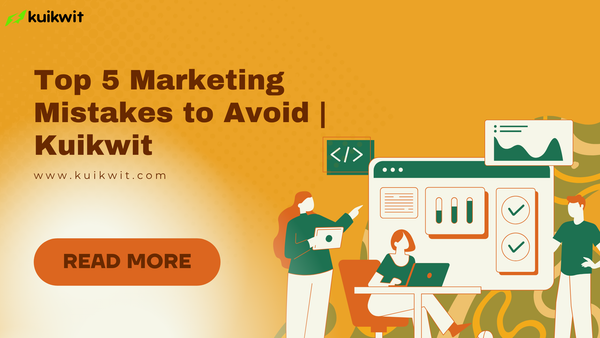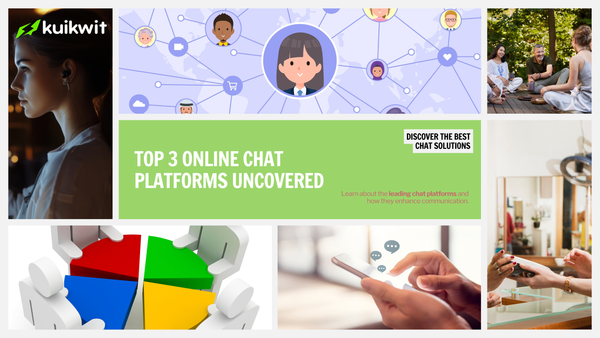How Messaging Bridges the Gap Between Businesses and Customers
Discover how messaging tools connect businesses with customers, build trust, and improve communication. Learn how to strengthen relationships through real-time chat.

In today’s hyper-connected world, customers don’t just want communication they expect conversation. The days of long phone queues and ignored emails are fading fast. Instead, real-time messaging has emerged as the bridge that connects businesses with their customers instantly, personally, and effectively.
Messaging isn’t just a convenience anymore it’s a competitive advantage. Whether through live chat, WhatsApp, or social media DMs, messaging builds relationships that drive trust, loyalty, and growth. Let’s explore how messaging is transforming business communication and why it’s the bridge every modern company needs.
1. The Communication Gap: Why Businesses Lose Customers
Before messaging tools became mainstream, most businesses relied on calls and emails to communicate. While these channels worked, they often created friction.
A customer might send an email and wait hours (or even days) for a reply. Or worse they might never hear back. In a world where speed equals care, slow responses can feel like neglect.
According to HubSpot’s 2024 Customer Expectations Report, 90% of customers expect an immediate response when they have a support question, and 82% say they’re more likely to stay loyal to a brand that communicates quickly and clearly.
The gap isn’t about products or prices it’s about communication speed and empathy. This is where business messaging steps in.
2. The Rise of Business Messaging
Messaging has redefined customer-business interaction. It combines the convenience of instant replies with the personal touch customers crave.
From SMS and WhatsApp to Instagram DMs and web chat, businesses now meet customers where they already are on their favorite apps.
In fact, Meta’s 2025 Messaging Report found that over 65% of customers prefer messaging a business over calling or emailing because it feels more natural and faster.
This evolution isn’t just about technology it’s about mindset. Messaging humanizes brands. It transforms interactions from transactions into conversations.
3. Real-Time Connection Builds Trust
Trust is the foundation of every successful customer relationship. When customers can message a brand and get a response within minutes, it creates confidence.
Imagine a customer who’s unsure about a purchase. They send a quick message to your support team, and within seconds, they receive a helpful, friendly response. That single interaction can turn hesitation into a sale and a one-time buyer into a loyal customer.
According to Zendesk’s 2024 CX Trends Report, 78% of consumers are more likely to buy from companies that offer messaging support.
In short, quick, consistent communication builds trust and trust drives revenue.
4. Personalization: The Secret Ingredient
Unlike traditional channels, messaging allows for personalized, human-centered communication. Businesses can tailor messages based on customer history, preferences, and behavior.
For instance:
- A clothing brand can message customers about restocks in their size.
- A café can send personalized offers to regulars.
- A SaaS business can follow up with helpful onboarding tips after signup.
These micro-interactions show customers that your brand remembers and values them something generic emails often fail to do.
As McKinsey’s 2025 Digital Behavior Study highlights, personalized messaging can increase customer engagement rates by up to 80%.
5. Efficiency Through Automation and AI
The best part? Messaging doesn’t have to mean manual work 24/7.
Modern platforms like Kuikwit your all-in-one messaging hub help businesses automate responses, categorize queries, and manage conversations across multiple channels in one place.
AI chatbots can instantly reply to FAQs, freeing your support agents to handle complex issues. This reduces response time while maintaining quality.
It’s not about replacing humans it’s about helping teams focus on what truly matters: delivering human connection efficiently.
6. Omnichannel Messaging: One Conversation, All Platforms
Today’s customers switch between channels from Instagram to email to WhatsApp seamlessly. And they expect businesses to keep up.
Omnichannel messaging tools ensure that no matter where a conversation starts, it continues smoothly without customers repeating themselves.
With platforms like Kuikwit, businesses can manage all conversations whether from social media, live chat, or email under one unified dashboard.
That means fewer missed messages, faster replies, and happier customers.
A Salesforce report reveals that 75% of consumers expect consistent communication across all platforms, and companies that deliver this see up to 3x higher customer retention rates.
7. Data-Driven Insights Improve Engagement
Another major benefit of messaging tools is analytics. Every message, reply time, and customer interaction offers valuable data.
By analyzing response times, message volume, and sentiment, businesses can identify weak spots and optimize their customer experience strategy.
For instance:
- If many customers ask the same question, you can improve your FAQ or product description.
- If response times are long during certain hours, you can adjust staffing or enable automated replies.
Messaging turns communication into actionable insights helping businesses continuously improve.
8. Human + Tech = The Perfect Balance
It’s easy to think of messaging as a tech tool, but the real magic happens when you mix technology with empathy.
A friendly tone, quick responses, and personalized attention create memorable experiences that customers talk about.
Even a simple message like “We’re on it thanks for reaching out!” can make customers feel seen and valued.
The combination of AI efficiency and human warmth is what sets great brands apart. It’s not about being online all the time it’s about being there when it matters.
9. Messaging for Every Stage of the Customer Journey
From the first inquiry to post-purchase support, messaging supports every step of the customer journey.
Here’s how:
- Awareness: Use messaging ads or chat prompts to engage new visitors.
- Consideration: Offer quick answers and product recommendations.
- Purchase: Send order confirmations or updates instantly.
- Loyalty: Follow up with thank-you notes or feedback requests.
Each message strengthens the connection between your business and your customers.
10. The Future of Messaging: Even More Human
As technology evolves, messaging is becoming smarter, faster, and more human.
Voice messages, interactive buttons, AI-powered chatbots all make communication smoother.
But the goal remains the same: building stronger relationships through simple, authentic conversations.
By embracing messaging now, businesses future-proof their communication strategy staying ahead in a world where speed and connection define success.
Conclusion: Messaging is the Bridge to Better Relationships
The gap between businesses and customers isn’t about distance it’s about communication. And messaging is the bridge that closes it.
It’s real-time, personal, and effortless exactly what modern customers expect.
Whether you’re a small business or a large enterprise, investing in a unified messaging solution like Kuikwit helps you connect faster, serve better, and grow stronger.
Because at the end of the day, every message is more than words it’s an opportunity to build trust.
So, how ready is your business to bridge the gap with messaging?




